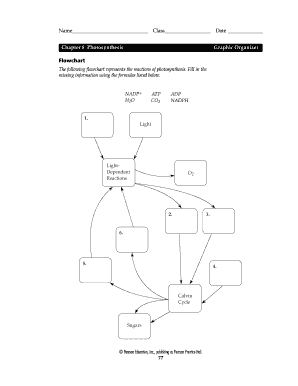Fill and Sign the Photosynthesis Graphic Organizer PDF Form

Useful Suggestions for Finishing Your ‘Photosynthesis Graphic Organizer Pdf’ Online
Are you fed up with the inconvenience of managing paperwork? Look no further than airSlate SignNow, the premier eSignature solution for individuals and businesses. Bid farewell to the lengthy routine of printing and scanning documents. With airSlate SignNow, you can easily complete and sign documents online. Take advantage of the powerful features included in this user-friendly and affordable platform and transform your method of document management. Whether you need to authorize forms or gather eSignatures, airSlate SignNow takes care of everything seamlessly, requiring just a few clicks.
Adhere to this comprehensive guideline:
- Sign in to your account or sign up for a complimentary trial with our service.
- Select +Create to upload a document from your device, cloud storage, or our template collection.
- Open your ‘Photosynthesis Graphic Organizer Pdf’ in the editor.
- Click Me (Fill Out Now) to set up the form on your end.
- Insert and assign fillable fields for other participants (if necessary).
- Proceed with the Send Invite options to solicit eSignatures from others.
- Download, print your copy, or convert it into a reusable template.
Don’t be concerned if you need to work together with your colleagues on your Photosynthesis Graphic Organizer Pdf or send it for notarization—our platform provides everything you require to accomplish such tasks. Register with airSlate SignNow today and elevate your document management to new levels!
FAQs
-
What is a Photosynthesis Graphic Organizer PDF?
A Photosynthesis Graphic Organizer PDF is a structured document designed to help students and educators visualize the process of photosynthesis. It typically includes key components such as light reactions, the Calvin cycle, and the role of chlorophyll, making it an effective study tool. This PDF format ensures easy printing and sharing for classroom or individual use.
-
How can the Photosynthesis Graphic Organizer PDF enhance learning?
The Photosynthesis Graphic Organizer PDF enhances learning by providing a clear and concise visual representation of the photosynthesis process. This tool helps students grasp complex concepts, making it easier to study and understand the relationships between different components of photosynthesis. With this organizer, educators can facilitate engaging discussions and activities.
-
Is the Photosynthesis Graphic Organizer PDF customizable?
Yes, the Photosynthesis Graphic Organizer PDF can be customized to fit your educational needs. Users can modify sections, add notes, or include specific examples pertinent to their curriculum. This flexibility allows educators to tailor the organizer for different learning environments and student levels.
-
Where can I download the Photosynthesis Graphic Organizer PDF?
You can download the Photosynthesis Graphic Organizer PDF directly from our website. Simply navigate to the resources section, select the PDF, and follow the prompts to download it for free. This convenient access ensures you have the organizer at your fingertips whenever needed.
-
What are the benefits of using the Photosynthesis Graphic Organizer PDF in the classroom?
Using the Photosynthesis Graphic Organizer PDF in the classroom offers several benefits, including improved student engagement and comprehension. It serves as a visual aid that helps students organize their thoughts and understand the photosynthesis process more effectively. Additionally, it promotes collaborative learning when used in group settings.
-
Can I integrate the Photosynthesis Graphic Organizer PDF with other teaching tools?
Absolutely! The Photosynthesis Graphic Organizer PDF can be easily integrated with various teaching tools and platforms. Whether you're using digital learning environments or traditional classroom settings, you can incorporate the organizer into presentations, worksheets, or even interactive lessons to enhance the learning experience.
-
What is the cost of the Photosynthesis Graphic Organizer PDF?
The Photosynthesis Graphic Organizer PDF is available for free on our website. We believe in providing valuable educational resources without any cost, allowing teachers and students to access effective learning tools without financial barriers. Download yours today and start enhancing your understanding of photosynthesis!
Related searches to photosynthesis graphic organizer pdf form
Find out other photosynthesis graphic organizer pdf form
- Close deals faster
- Improve productivity
- Delight customers
- Increase revenue
- Save time & money
- Reduce payment cycles

